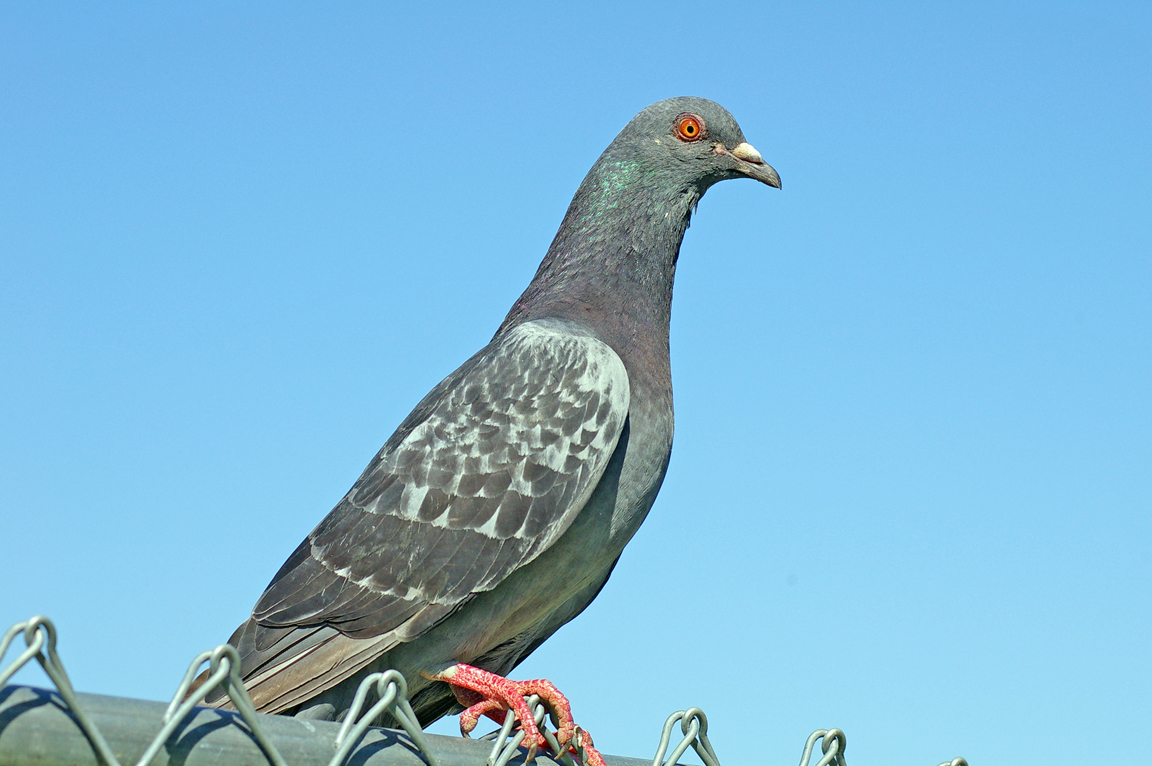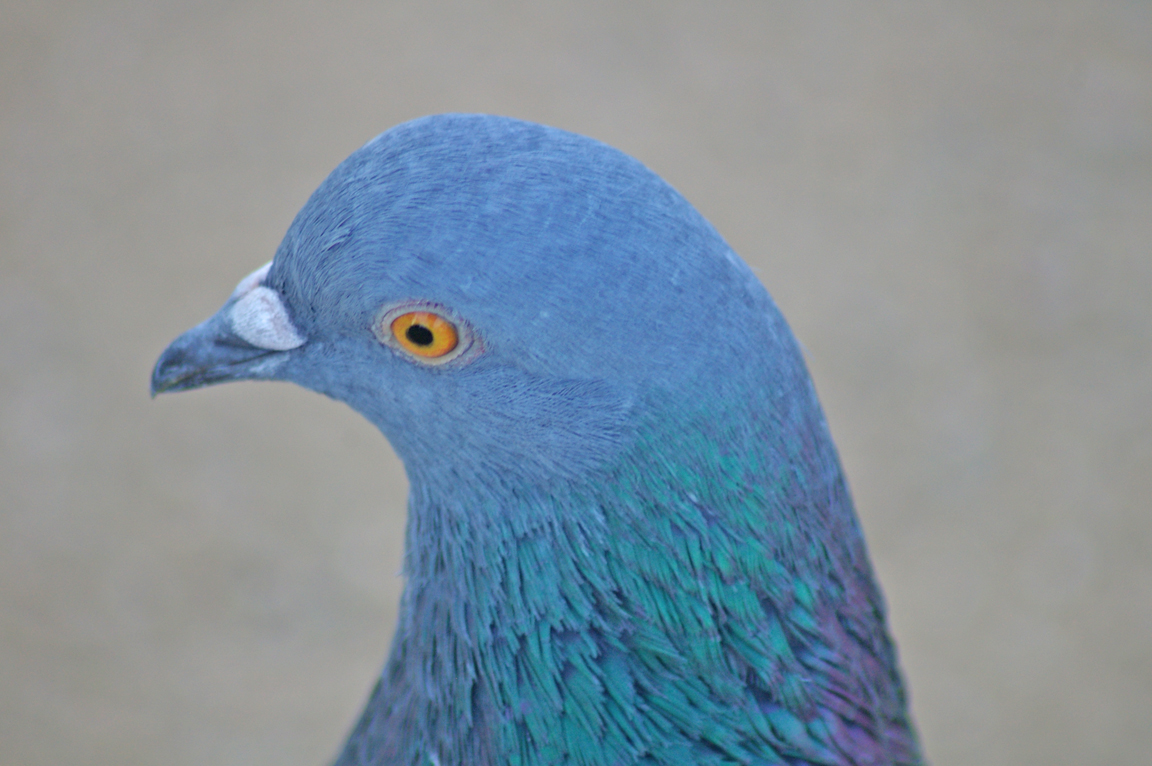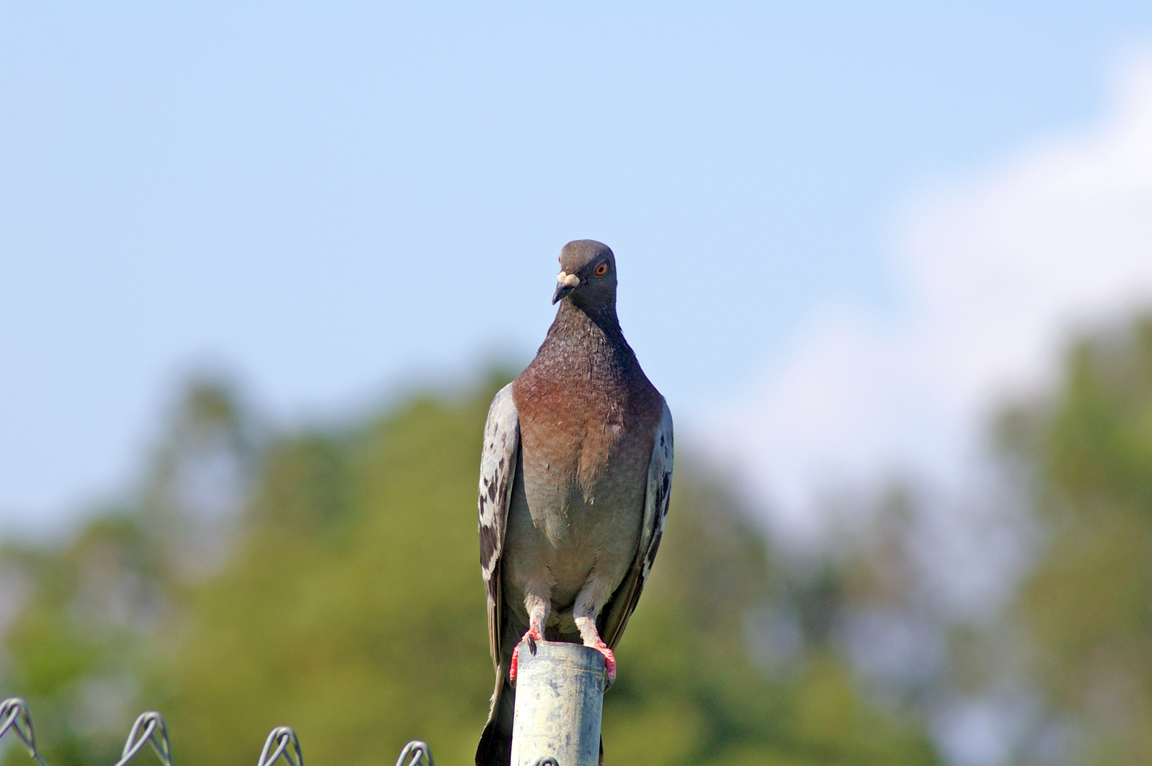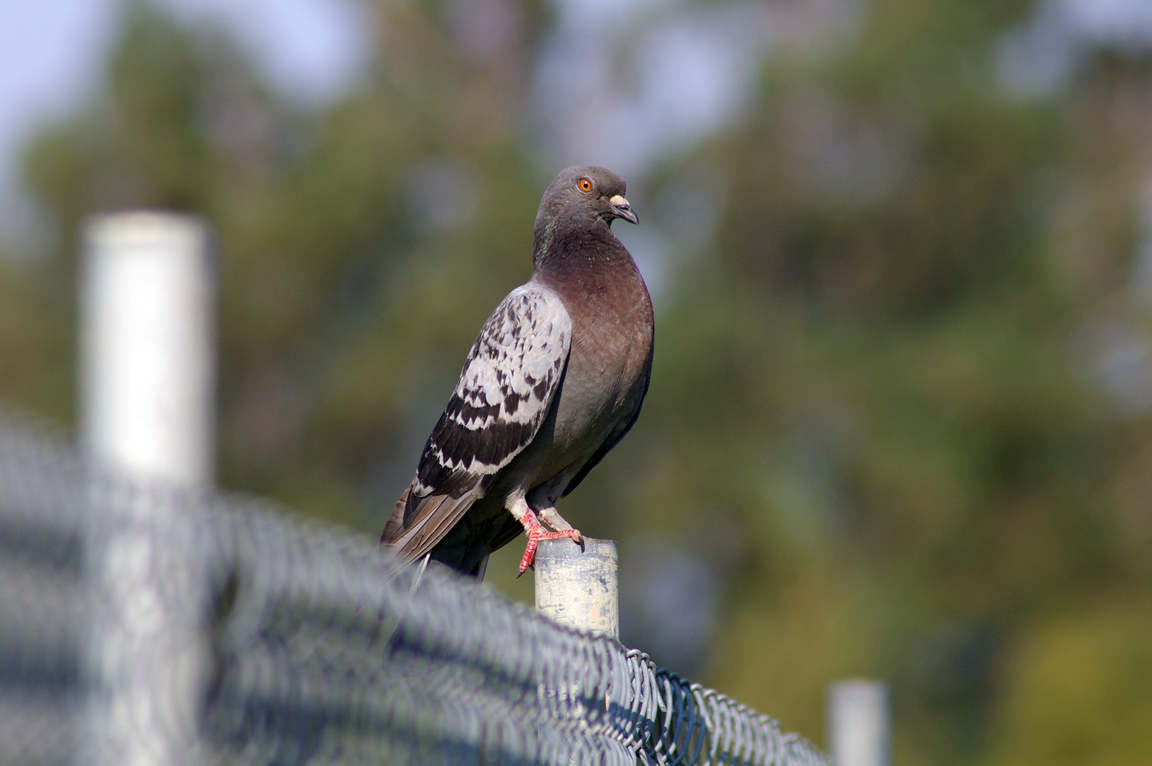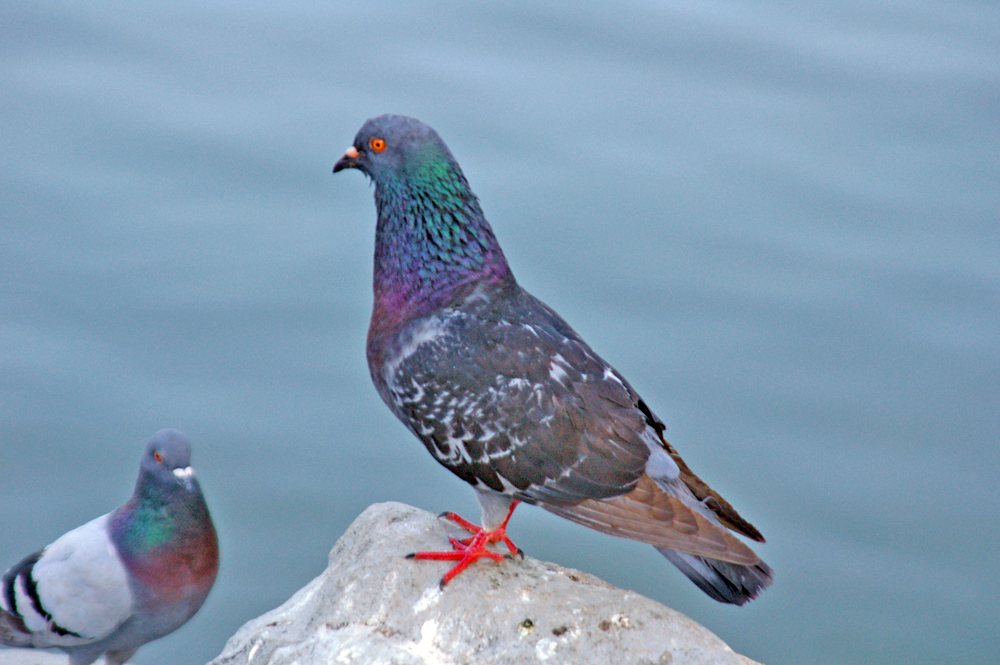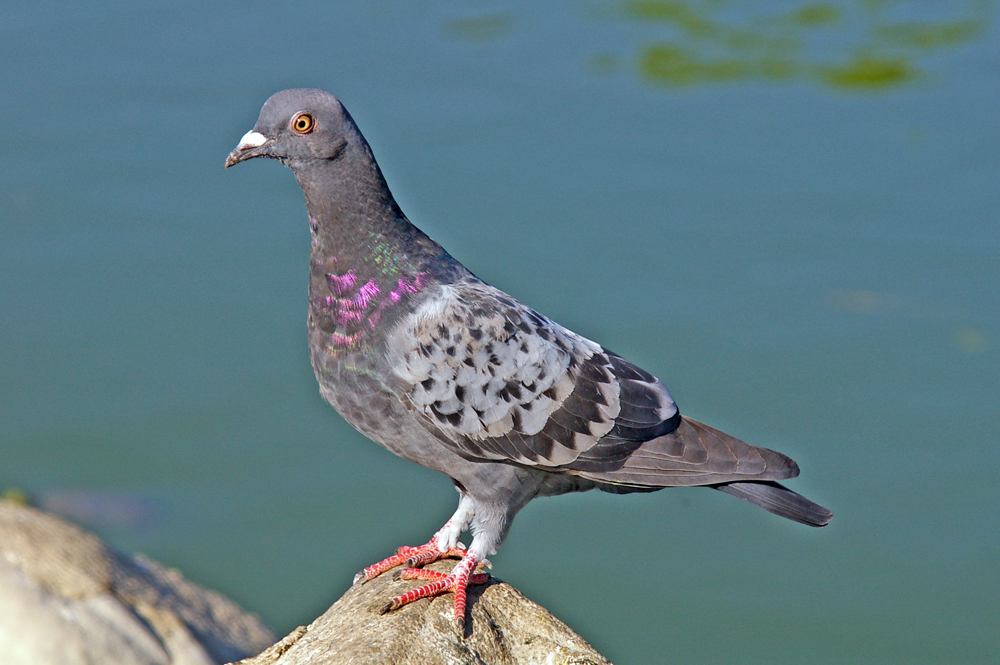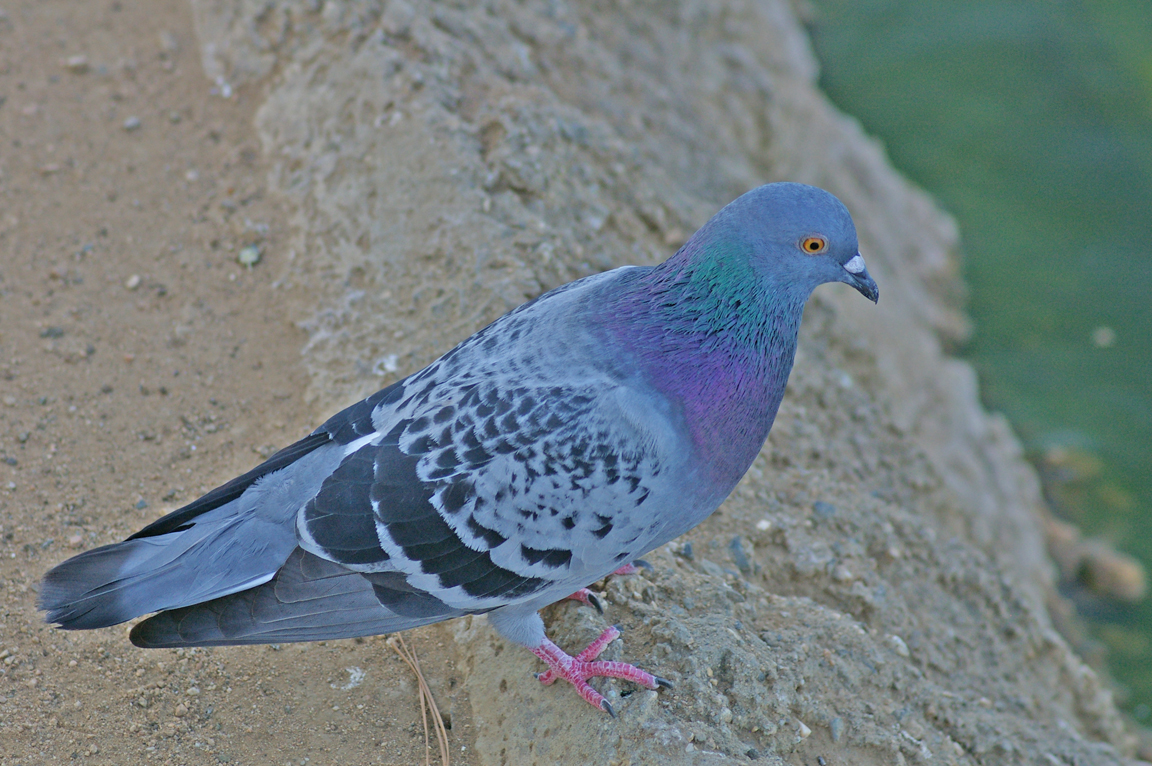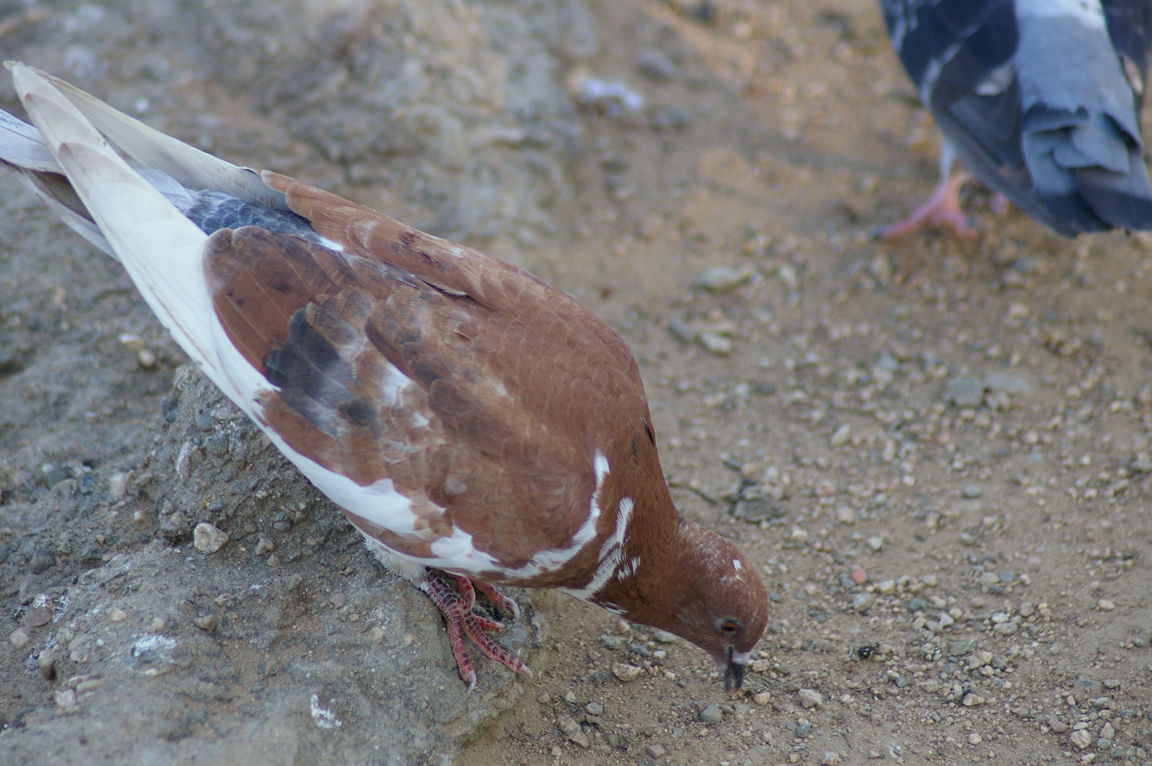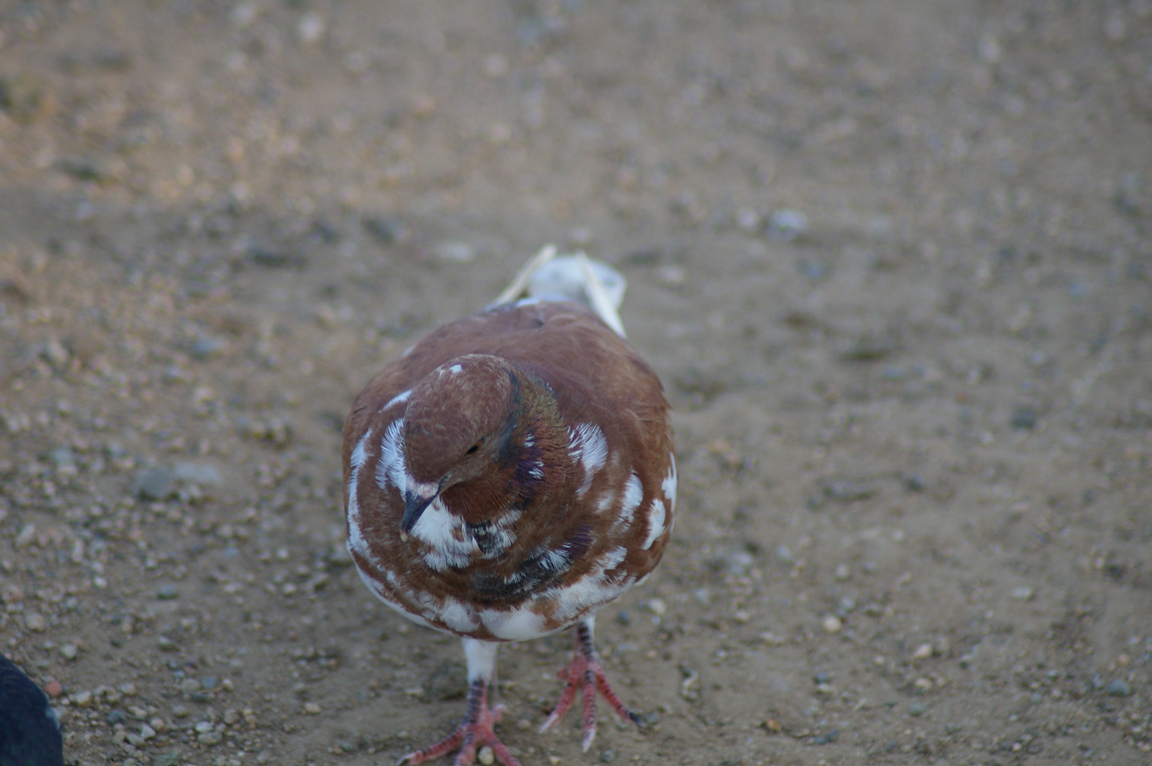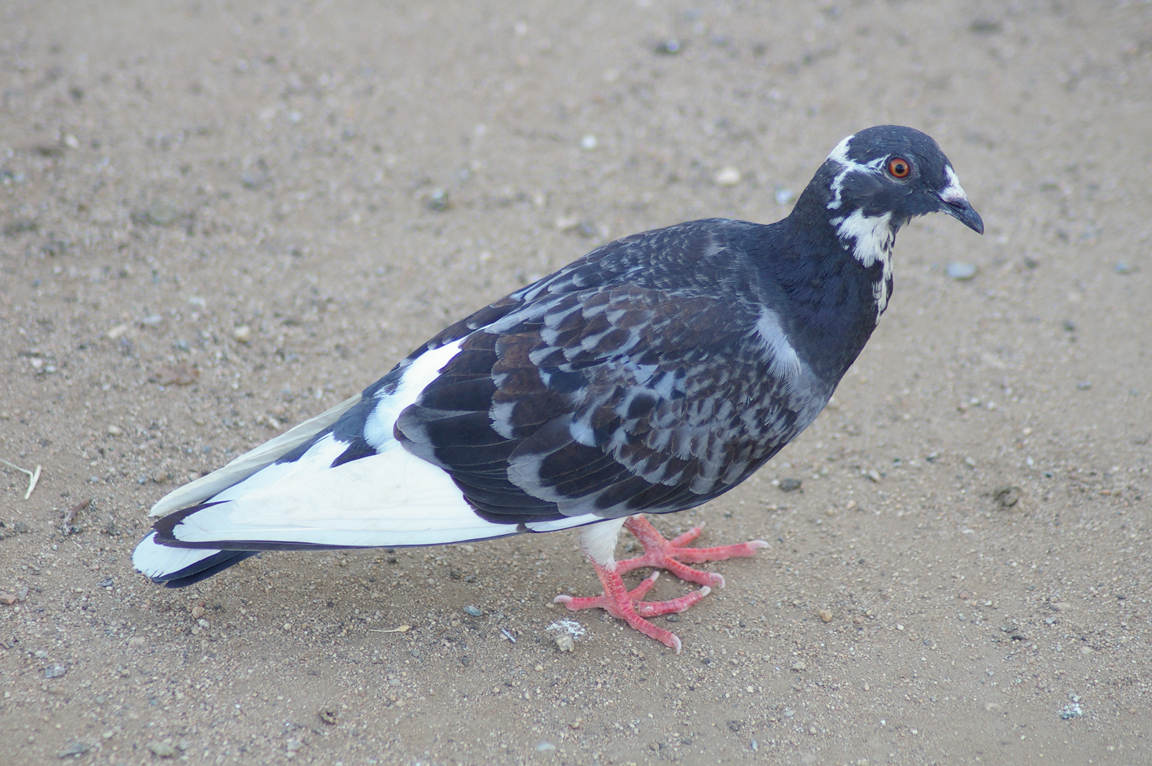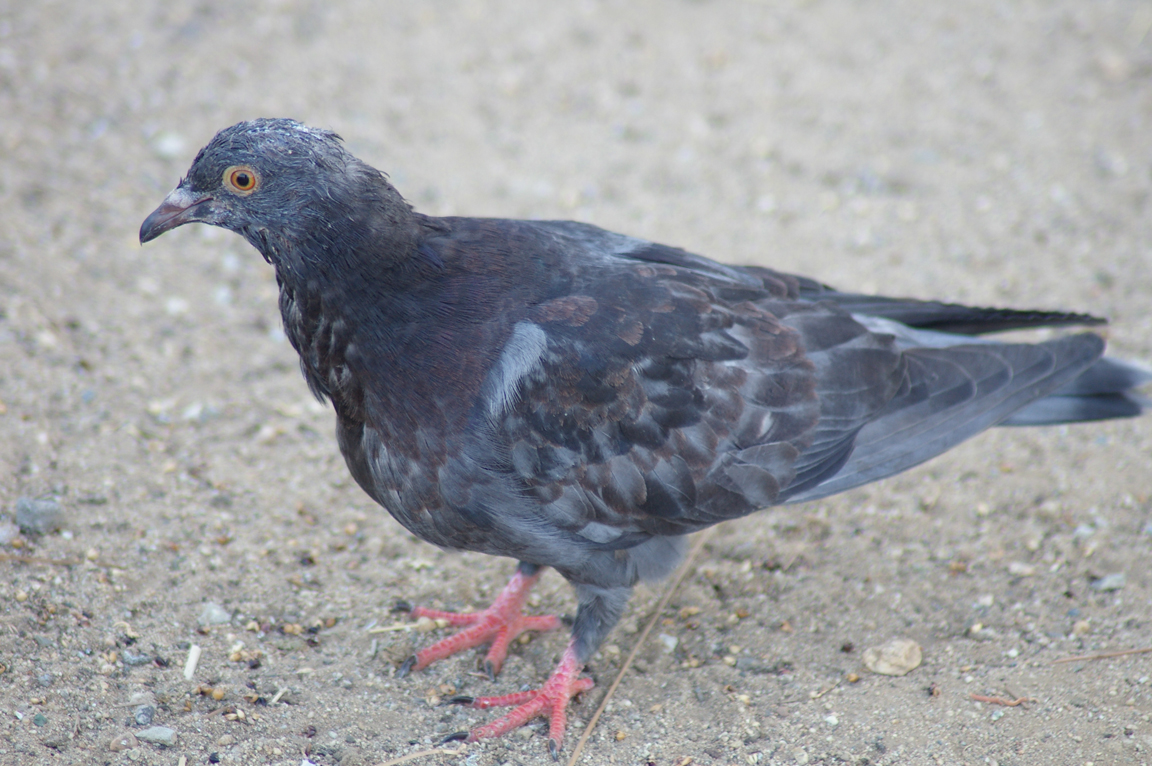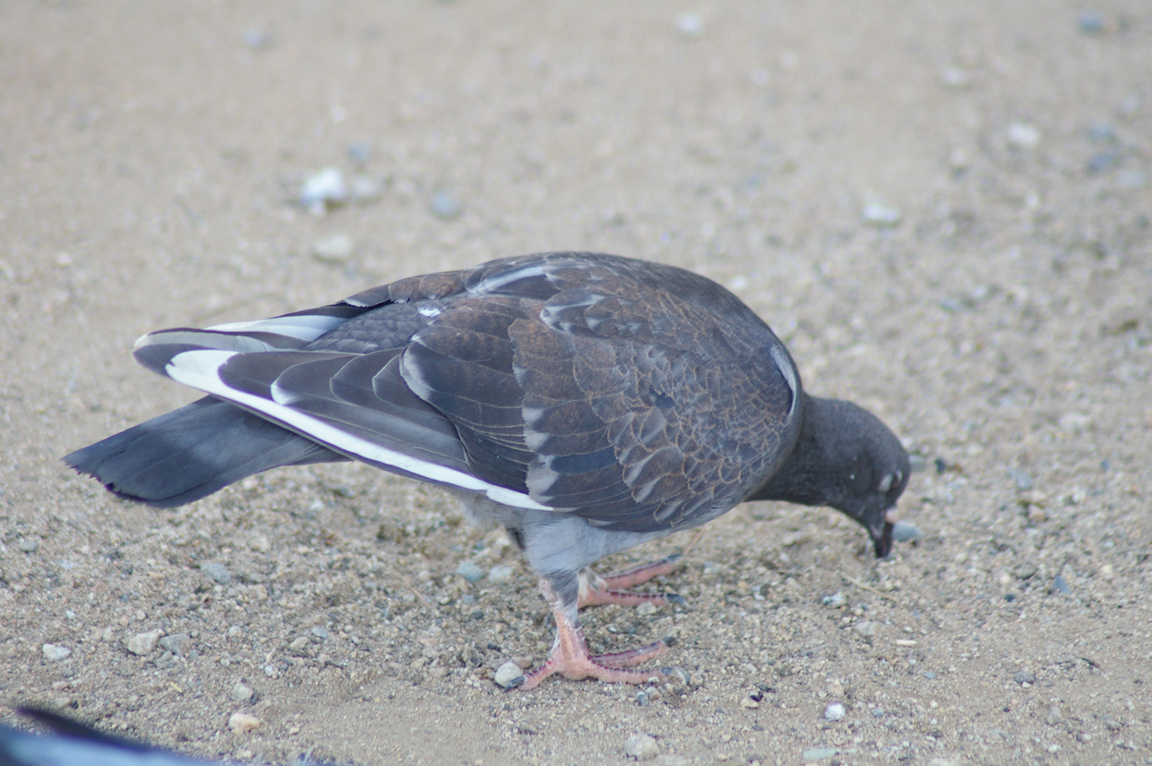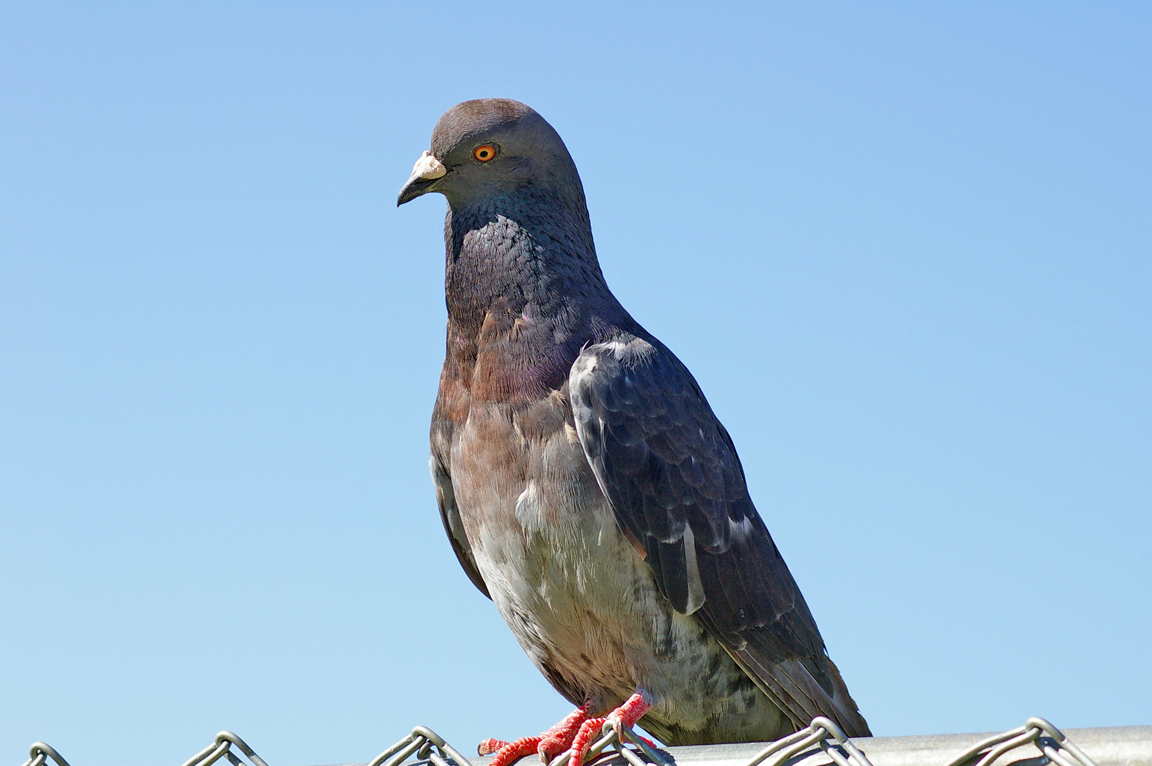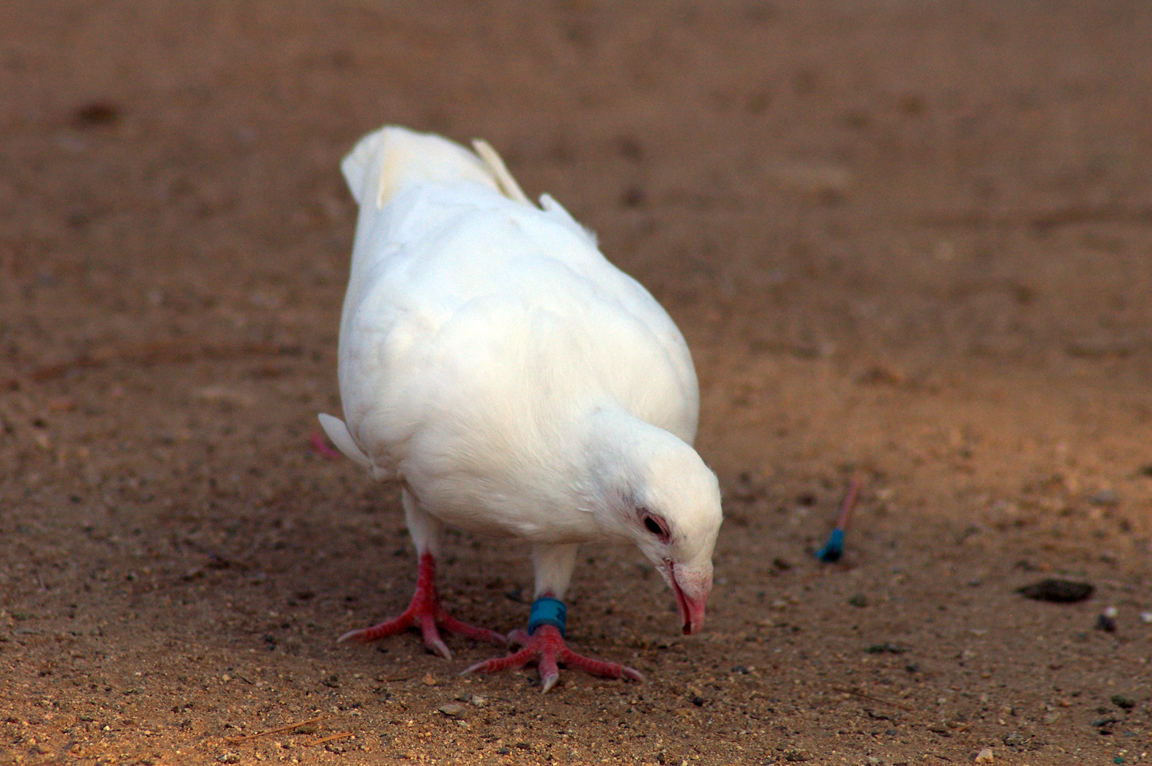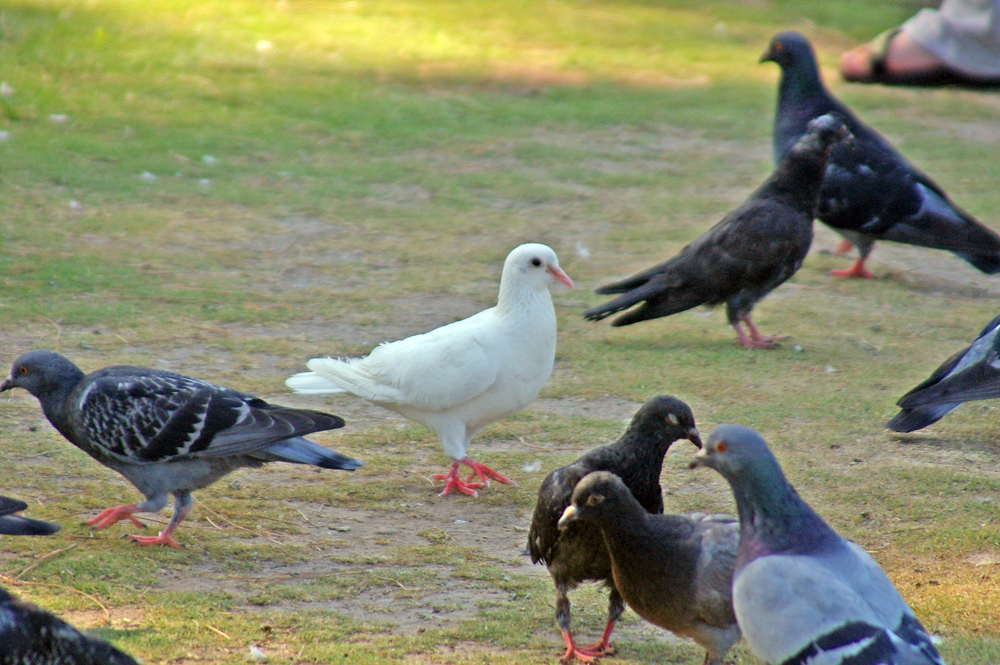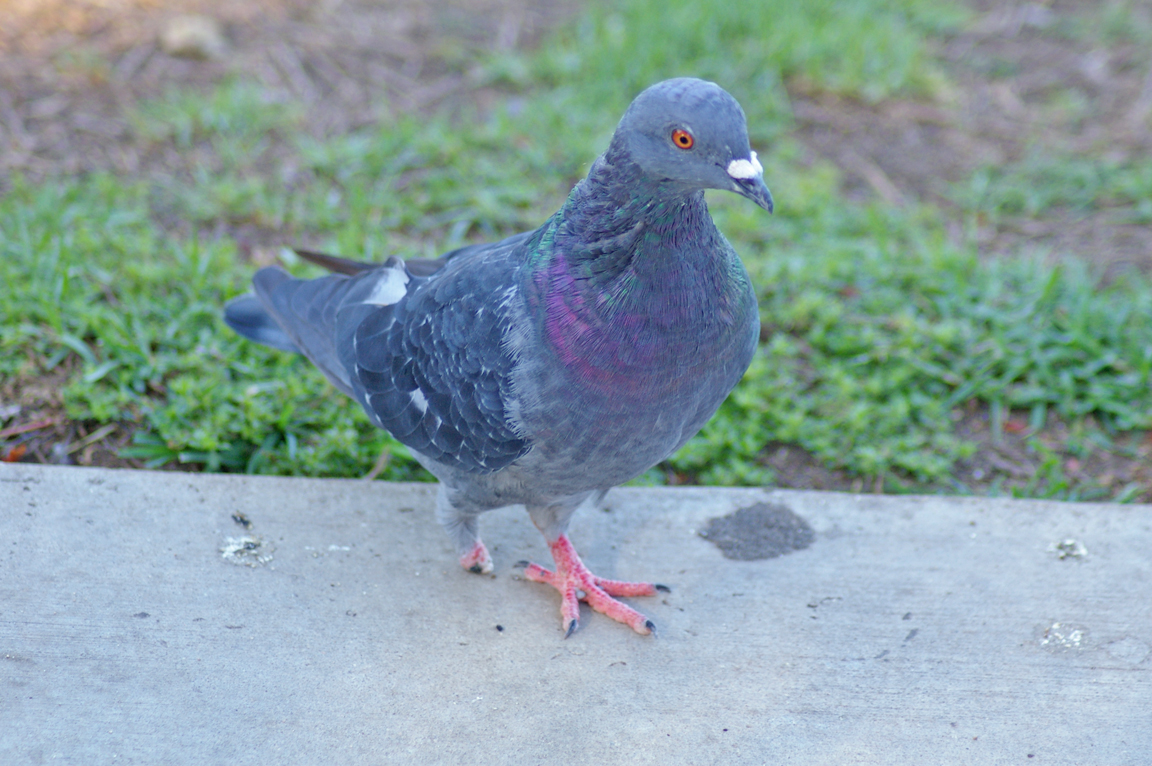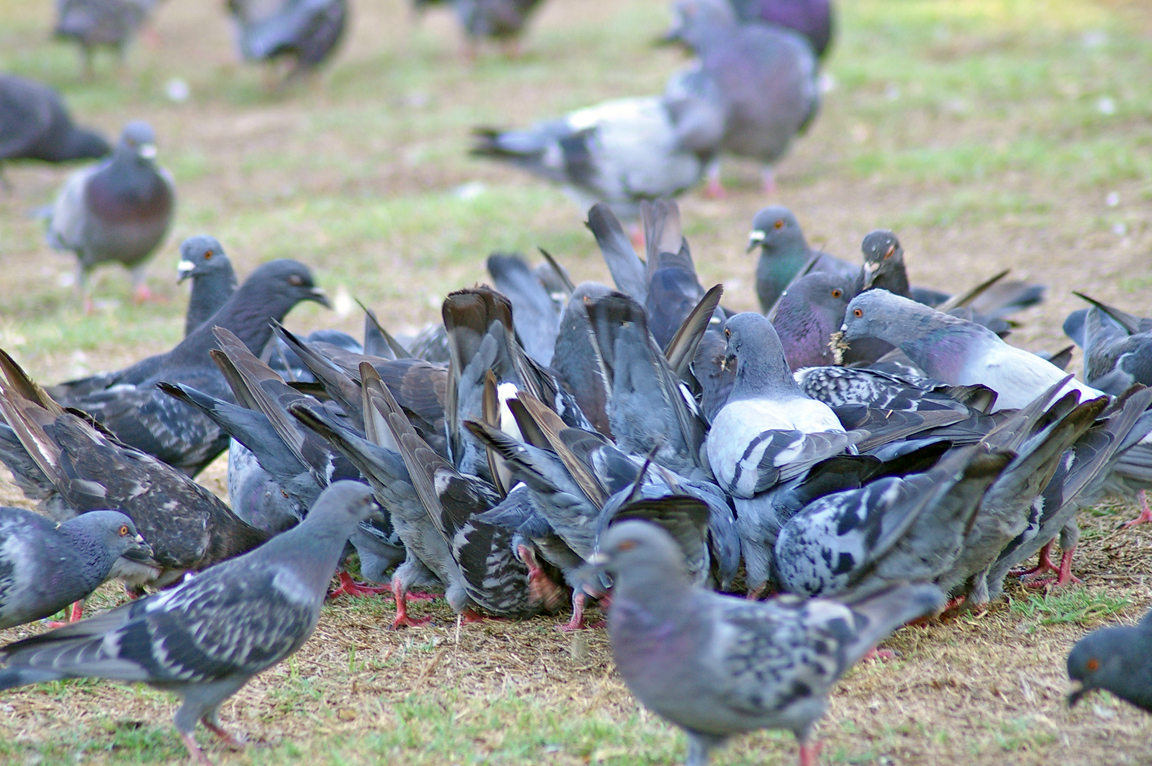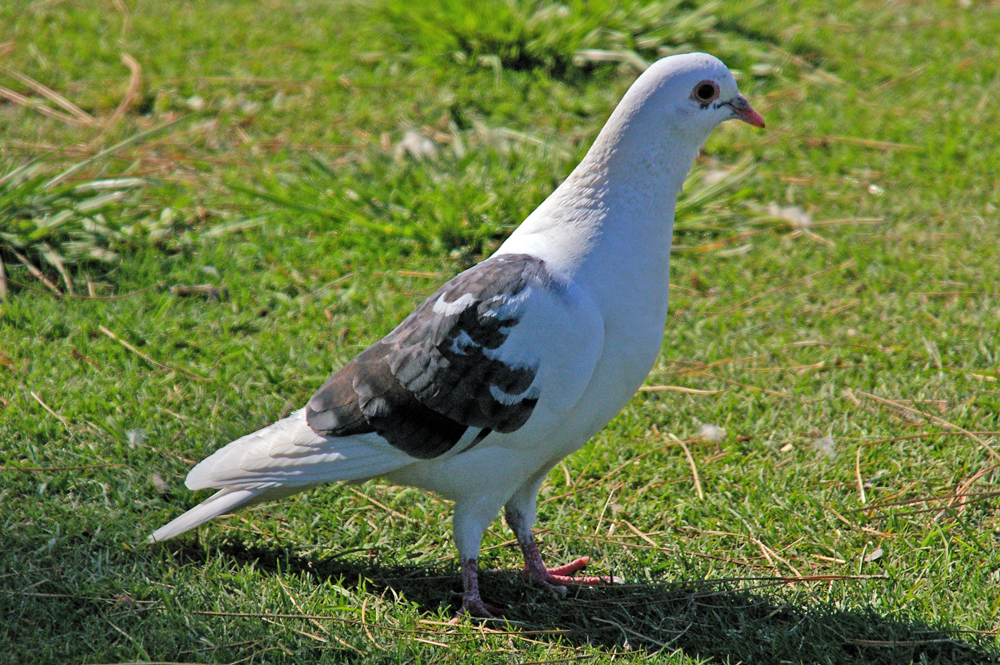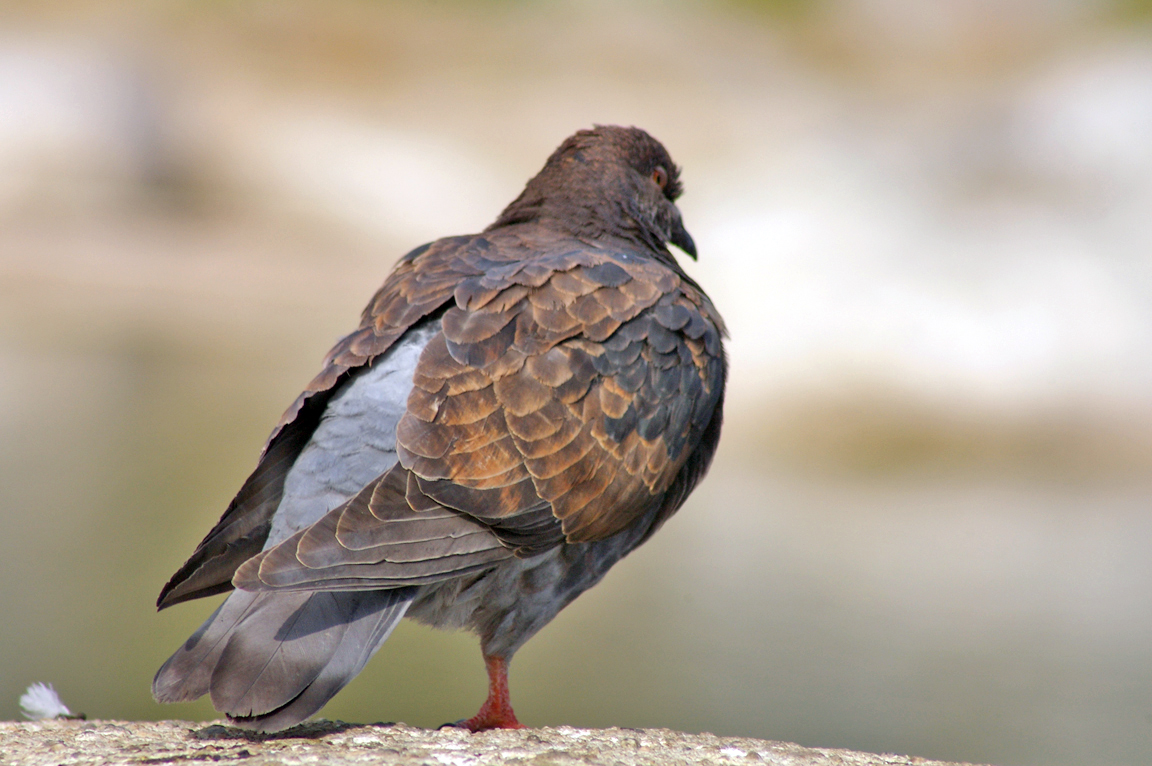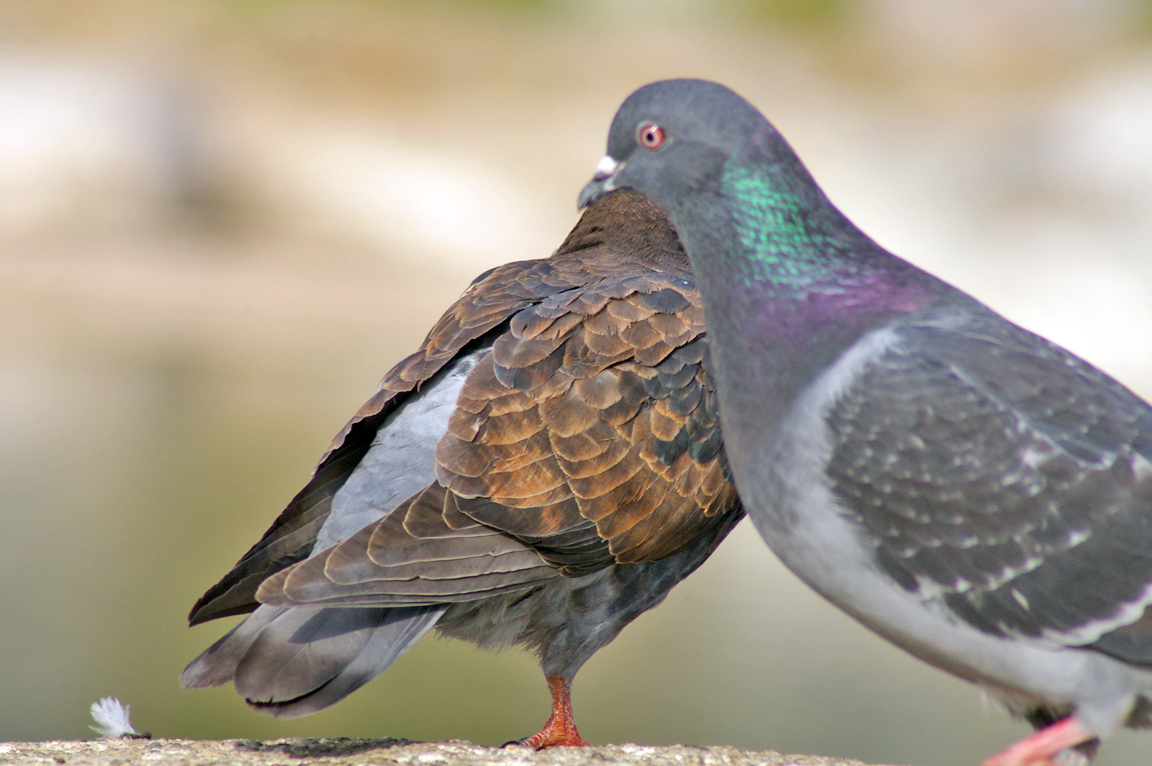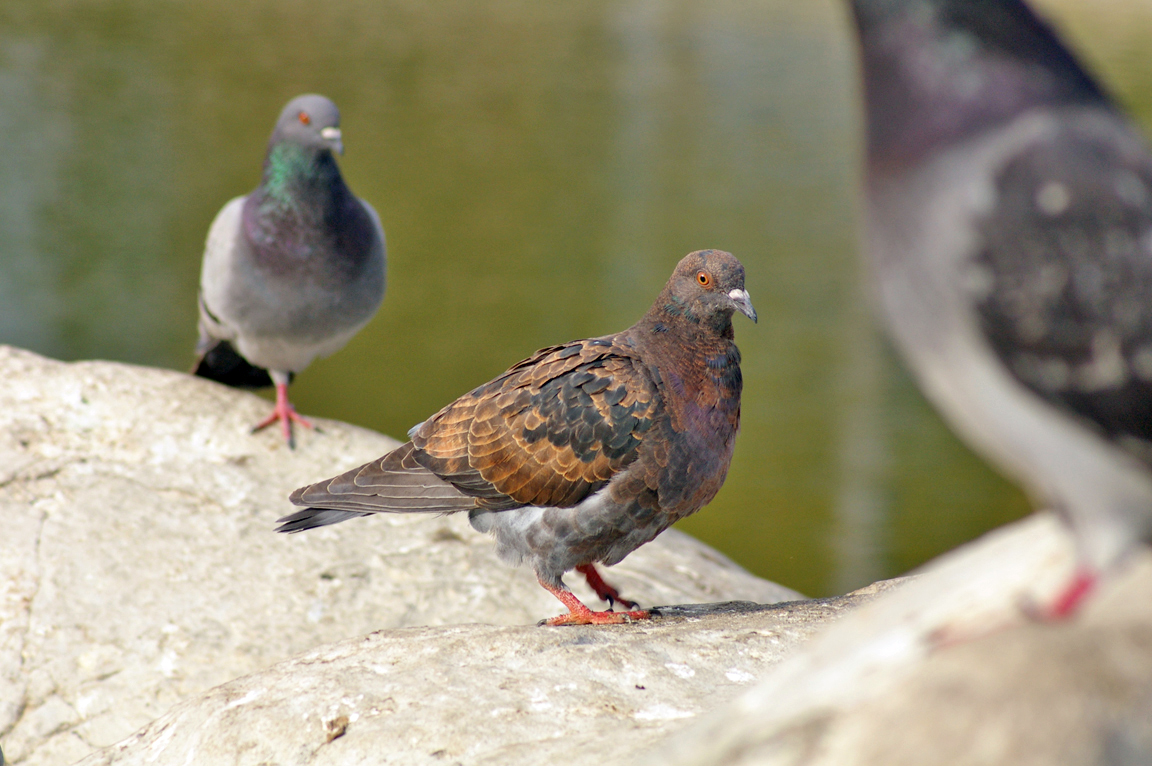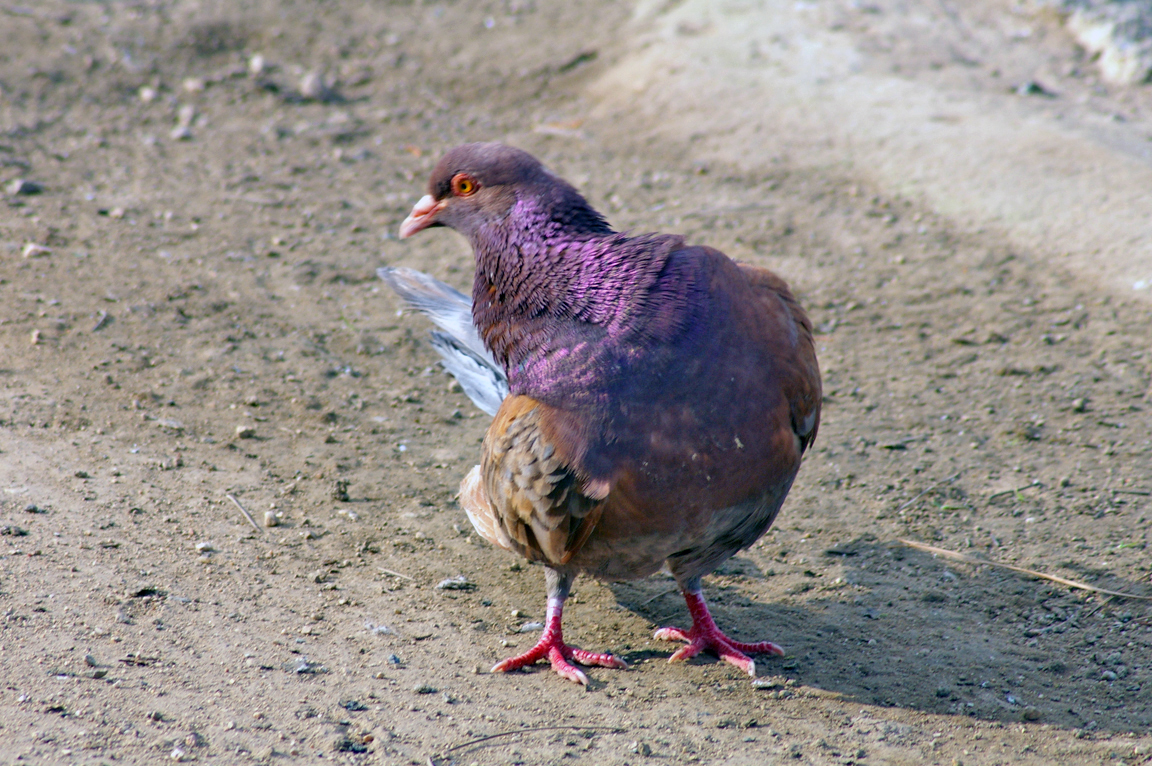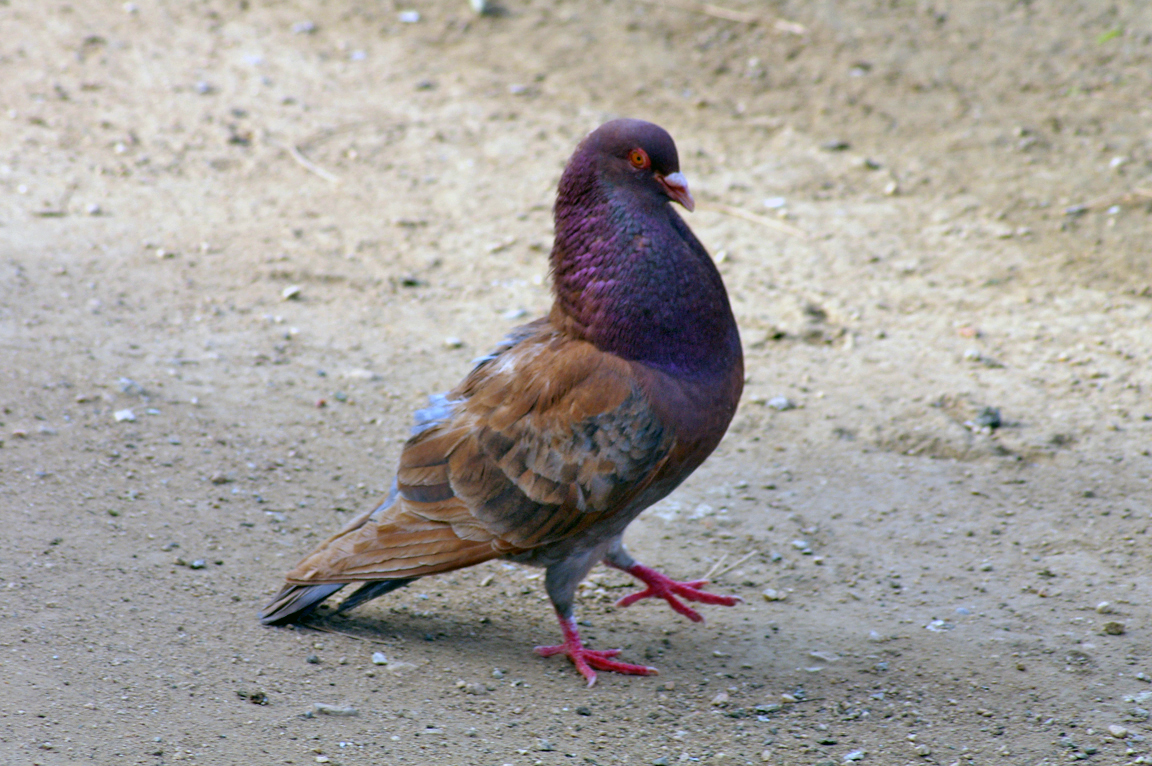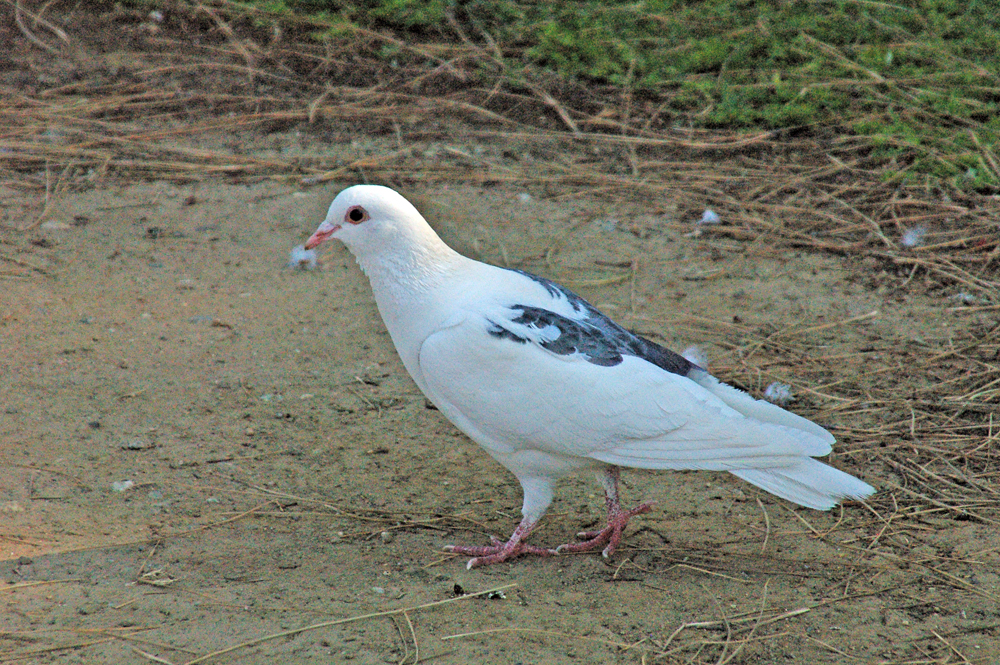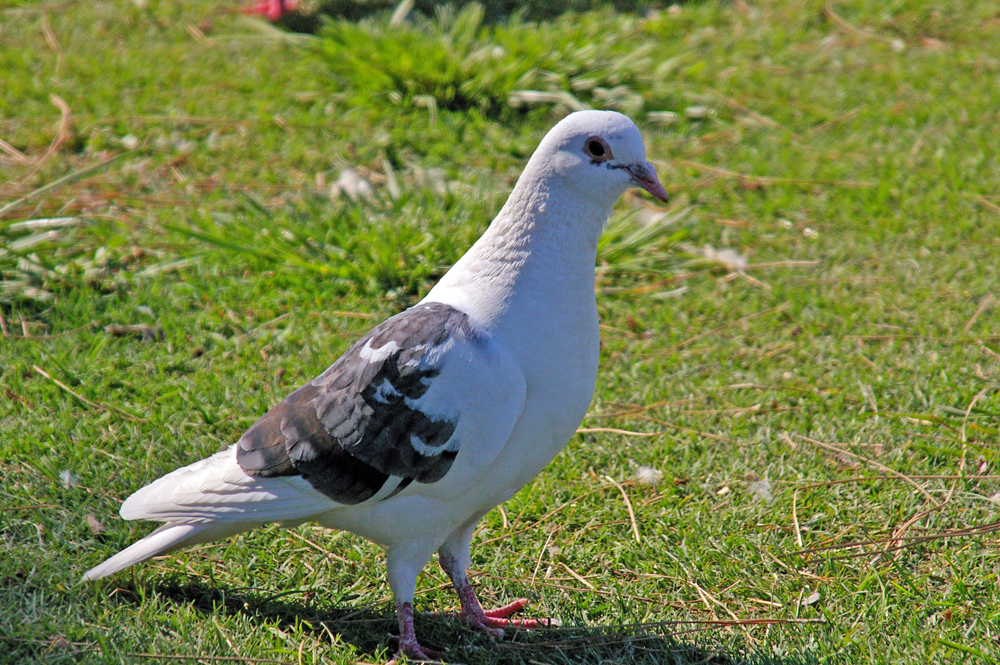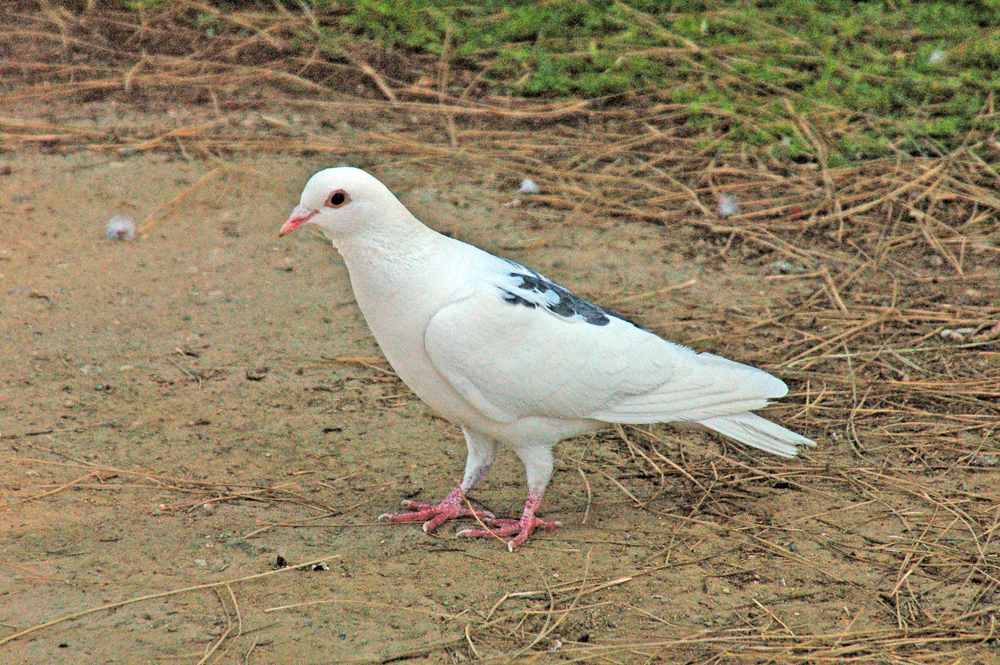|
|
|
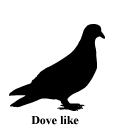 |
Rock Dove (Pigeon)
|
| Columba livia | |
A common sight in urban areas throughout the world, the Rock Pigeon was introduced into North America in the early 1600s. City buildings and their window ledges mimic the rocky cliffs used by wild pigeons.
Interesting Information
-
Because of their domestic roots, and because people have bred pigeons for many different colors and adornments, feral Rock Pigeons can have a variety of plumages. For a description of the most common varieties, as described for PigeonWatch, go here.
-
The Rock Pigeon makes a flimsy nest, but it often reuses the location repeatedly, building a new nest on top of the first. Because the pigeons do not try to remove the feces of their nestlings, the nest turns into a sturdy, potlike mound that gets larger month by month. Unhatched eggs and mummies of dead nestlings may also get cemented into the nest.
-
The Rock Pigeon has such a long history of association with humans, having been used for food and entertainment for over 5,000 years, that the original range of the species is impossible to determine. Escaped (feral) pigeons from pigeon breeders readily form flocks, and wild birds may join them.
-
Homing pigeons, domestic Rock Pigeons, are well known for their ability to find their way home from long distances. Despite these demonstrated abilities, wild Rock Pigeons are rather sedentary and rarely leave their local areas.
-
You can help discover new information about Rock Pigeons by joining the Cornell Lab of Ornithology's PigeonWatch.
Description
Adult Description
-
Size: 29-36 cm (11-14 in)
-
Wingspan: 50-67 cm (20-26 in)
-
Weight: 265-380 g (9.35-13.41 ounces)
-
Large pigeon.
-
Color variable, but wild birds are gray.
-
White rump.
-
Rounded tail, usually with dark tip.
-
Pale gray wings have two black bars.
-
Wings broad with moderately pointed wingtips.
Sex Differences
Sexes look alike, but male averages larger and has more iridescence on neck.
Immature
Juvenile similar to adult, but duller and with less iridescence.
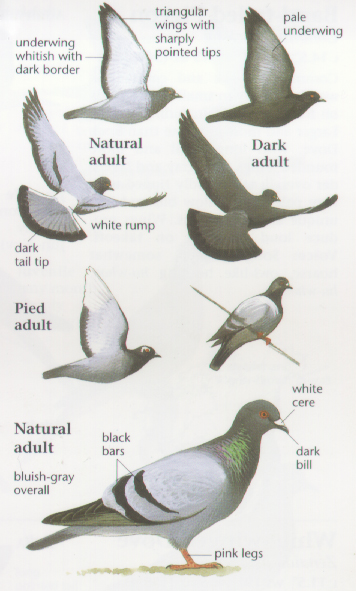
Photo taken from: The Sibley Field Guide by David Allen Sibley
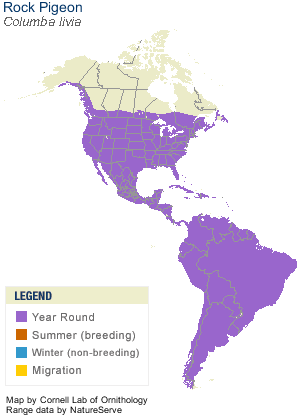
© 2003 Cornell Lab of Ornithology
|
Habitat |
|
Found around rocky cliffs, urban areas, and agricultural areas. |
|
Behavior |
|
Feeds on ground, in flocks. |
|
Food |
|
Seeds, fruits, rarely invertebrates. |
Taxonomy
| Kingdom: | Animalia |
| Phylum: | Chordata |
| Subphylum: | Vertebrata |
| Class: | Aves |
| Order: | Columbiformes |
| Family: | Columbidae |
| Subfamily: | Columbinae |
| Genus: | Columba |
| Species: | Columba livia |
| Subspecies: | Columba livia dakhlae |
| Columba livia gaddi | |
| Columba livia gymnocycla | |
| Columba livia intermedia | |
| Columba livia livia | |
| Columba livia neglecta | |
| Columba livia palaestinae | |
| Columba livia schimperi | |
| Columba livia targia |
Similar Species |
|
|
Bird Sound |
|
Song a rolling "Coo, rooc'too-coo." |
|
Eggs look like this |
|
Photo taken from: ARCTOS Collaborative Collection Management Solution |
Videos
Rock Dove
Hand feeding
Rock Dove
Nubbs the one legged Pigeon
